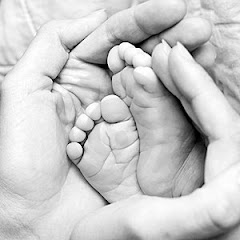Now that spring is around the corner, several patients are asking about varicose veins. Questions asked include: why do they come about? what can be done to treat them?
Superficial veins close to the skin surface can become engorged and appear to bulge. These seem to occur most commonly in the legs and feet.
A common theory suggests that varicose veins are due to ineffecient valves in the vein which allows the vessel to become engorged and stretch. Over time the fluid in the vein can seep out of the vessel and into the surrounding tissue causing swelling and skin discoloration.
Some suggested treatments at home:
1. wear fitted support stockings
2. lose weight
3. elevating the legs above the heart for 30 mins 2-3 times daily
4.avoid crossing legs
5. avoid prolonged standing
More severe cases may require physician intervention. Some of these treatments include:
1. surgical ligation( surgically tying off the vessel)
2. venous stripping (actually removing the vein)
3. sclerotherapy ( injecting the vein with a solution that destroys the vessel)
4.laser ablation
Nail Care
Thursday, March 19, 2009
Monday, March 16, 2009
multiple patients today presenting with heel pain. a very common problem. those suffering from heel pain can have all questions answered in my FREE book. this can be ordered on website www.eastberlinpodiatrist.com. For more information on other foot conditions please go to website and look up the topic that interests you. You can also shop on our online store for doctor approved medical products.
If you have any questions in regards to foot and ankle pain please post your questions and I will answer them promptly.
If you have any questions in regards to foot and ankle pain please post your questions and I will answer them promptly.
Sunday, March 8, 2009
High Heels and Your Feet
To feel glamorous, sexy and taller are just a few of the reasons women wear high healed shoes. While heels can make a women feel more attractive, they can also be hazardous to her health.
Forcing the feet into narrow spaces in a unnatural position can creat discomfort in the low back legs and feet. Heels can force a woman to change the posture of her back and place excessive strain on the disc and postural muscles of the low back. Other conditions such as Shortening of the achilles tendon and gastroc muscles in the lower leg, bunions, hammertoes, metatarsalgia(forefoot pain), corns, calluses and ingrown toenails are commonly seen in our office.
While most conditions are treated conservatively, more severe deformities can require surgical intervention.
If a woman refuses to give up her heels, here are a few recommendations:
1. purchase shoes at the end of the day when your feet are at their largest. Feet will swell by the end of the day
2. look for shoes with a wider toe box
3. try to avoid heels higher than 2 inches.
4. avoid purhasing shoes with the hope of "breaking them in". If a shoe is uncomfortable when you try it on, chances are it will continue to be later.
5. If you have deformities such as bunions or hammertoes consider having a ball and ring stretch to the leather of the shoe that lies over these areas. any leather or shoe repair shop can do this for just a few dollars
6. wear flats instead of heels
7. have your feet measured by a trained salesman. Often times individuals will mistakenly thick they are one size but infact are really another. (more often than not, women will swear their feet are smaller than the size they actually measure!)
Subscribe to:
Posts (Atom)


